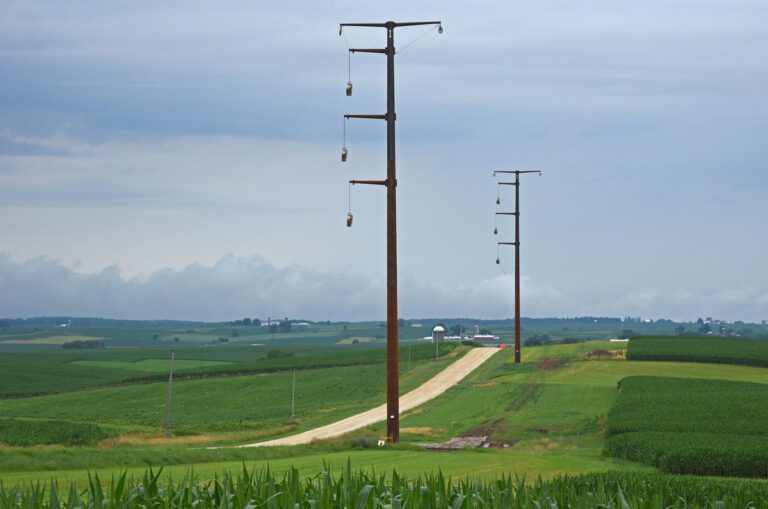A legal hurdle preventing the completion of a 100-mile power line in the Upper Midwest has been removed by a federal appeals court, which lifted an injunction barring construction of the controversial project in a wildlife refuge.
But the Cardinal-Hickory Creek high-voltage transmission line — a connection that would carry electricity from northern Iowa to a substation outside Madison, Wis. – still needs a permit to cross the Upper Mississippi River National Fish and Wildlife Refuge.
The controversy over Cardinal-Hickory Creek, first approved in 2011 by the region's grid operator, the Midcontinent Independent System Operator (MISO), has become a symbol for utilities, congressional Republicans and renewable developers. energy sources of the need for changes to facilitate the development of high – voltage transmission projects to enable the transition from fossil fuels.
On July 19, the 7th U.S. Circuit Court of Appeals lifted a preliminary injunction barring developers from building a portion of the project beyond the refuge, a 241,000-square-mile habitat for migratory birds, fish and wildlife along the Mississippi River .
Three transportation companies jointly building the Cardinal-Hickory Creek said in a statement the next day that the decision gives them the green light to complete the project. But they need a permit from the Fish and Wildlife Service to build on the entire refuge, and the conservation groups that have fought it at every stop aren't giving up.
Howard Learner, executive director of the Chicago-based Center for Environmental Law and Policy, which represents conservation groups opposed to the project, said the court 10 page opinion did not decide the merits of the matter. Instead, the justices ruled that there was not yet a formal decision from the FWS — a “final action” on which to base an order.
“We have to wait until the Fish and Wildlife Service makes a final decision in order for our claims to be fully heard by the court,” Learner said in an interview.
Groups including MISO, the Edison Electric Institute, the American Clean Power Association and the National Rural Electric Cooperative Association filed briefs in support of the Cardinal-Hickory Creek project in the 7th Circuit case.
The plaintiff groups — the Driftless Area Land Conservancy, the Wisconsin Wildlife Federation, the National Wildlife Refuge Association and Defenders of Wildlife — have not decided their next step, including whether to file another legal challenge if the developers receive a federal permit to build throughout the shelter.
The groups have expressed concern not only about the refuge, but also that the line crosses the surrounding Driftless region, an area in the Upper Midwest that was not flattened by glaciers and is characterized by its hills, bluffs and valleys.
“I don't want to say we're going to do X or Y until we see what they do,” said Learner of the Environmental Law and Policy Center.
The project's developers — American Transmission Co., ITC Midwest LLC and Dairyland Power Cooperative — declined to make representatives available for an interview.
On deposit with the Wisconsin Public Service Commission, the companies said they are “working with federal agencies to quickly complete their determination.”
“Once the timing of the decision is determined, the Co-Owners can set a schedule for construction of the Project near the Mississippi River and within the Upper Mississippi River National Wildlife Refuge,” the companies said.
In an emailed response to questions, the companies said they still need the Department of Agriculture's Farm Service Agency to complete a supplemental environmental assessment for minor route changes as well as approval from the FWS to complete a proposed land swap.
The developers proposed retiring a 69-kV transmission line within the refuge and co-locating another existing 161-kV line on the same line as Cardinal-Hickory Creek, reducing two existing transmission corridors to one. Cardinal-Hickory Creek is a 345 kV project.
“This means the two existing transmission corridors will be reduced to one after the project is constructed and the existing rights-of-way will be replanted,” the companies state on the Cardinal-Hickory Creek website.
Developers say 115 generating projects in Wisconsin and four other states that account for more than 17 gigawatts of renewable energy — enough to power millions of homes — depend on building the line.
Opponents say the statement is misleading — that Cardinal-Hickory Creek is not dedicated solely to renewable energy. It will carry power from both renewable and fossil fuel plants when and if completed.
While the developers were able to remove the preliminary injunction, uncertainty remains over the future of the project.
In the filing with the Wisconsin PSC, the developers could not offer a final cost estimate for the project. According to the filing, the cost has already reached $582 million as of June 30 — 18 percent higher than the $492 million estimate approved in the Wisconsin commission's mandate to approve the line.
Developers have blamed the cost increases on rising steel, aluminum and labor prices as well as costs associated with multiple lawsuits over federal and state approvals.

